

THEFOOLSCAP JOURNAL
PresentsMediaUnplugged
2024—2025
The Foolscap Journal Presents Media Unplugged
THE PRINTING HOUSE
This journal is an annual interdisciplinary journal written and edited by Book and Media Studies students and professors
The Foolscap Team
Editor-in-Chief
Salina Khan
Social Media Manager
Isabella Morrisette
Copy Editors
Audrey Lepez
Tamara Doiny
Layout and Cover Design
Salina Khan
Table of Contents
Letter from the Editor
Transcendence and Tangibility by
Felan Parker
Wear and Tear by
Sharmeen Imran
Groovin' Through the '60s: Vinyl and American Youth By
Adela Cucu
Anything Not Saved Will Be Lost By
Sharmeen Imran
Books Are Getting More Expensive, Did You Notice? By
Annika Lin
The Evolution of American- Canadian Relations Through the Lens of The Toronto Star By
Emily Neto
Cindy Liang
Mia Negrini
Tara Karanovic
Cressatti,
Letter from the Editor
Dear Readers,
Welcome to the Foolscap Journal 2024–2025!
We are proud to present this year’s edition a project born out of thoughtful collaboration and a shared commitment to exploring the evolving landscape of media Within these pages, you will encounter the voices of students from the Book and Media Studies program, each offering unique perspectives and critical reflections on this year’s theme
In a time defined by fast-paced, ever-evolving media landscapes marked by the rise of TikTok, artificial intelligence like ChatGPT, and countless other digital tools we’ve become increasingly reliant on technology to do the thinking, curating, and even connecting for us.
From our very first meeting, our team felt compelled to take a different approach. We wanted to move away from the ephemeral nature of digital platforms and instead return to something more grounded: the tactile, intentional world of tangible media.
It was this shared perspective that helped shape our theme, Media Unplugged.
We asked ourselves: How do tangible forms of media shape our experiences, our connections, and our sense of ownership in a digital world? In what ways can physical media act as a form of resistance against the fleeting trends of digital culture? And how does the simple act of handling, collecting, or interacting with physical media change the way we consume and interpret content?
With this edition of the Foolscap, we invited students to explore the contrasts between the digital and the tangible through the lenses of nostalgia, ownership, sensory engagement, and storytelling Tangible media offers a different kind of connection: sometimes complementary to digital forms, sometimes in stark contrast We encouraged contributors to reflect on how their relationships with content shift depending on the form it takes
We hope you find as much meaning in reading these pages as we did in curating and assembling them Each contribution represents a thoughtful engagement with the theme, reflecting the diverse perspectives and creative insights of students who chose to reflect critically on the role of tangible media in our digital age As you turn each page, we invite you to engage deeply with the texts, with the ideas, and with the materiality of the journal itself May this collection prompt reflection, spark conversation, and offer a moment of pause in an otherwise fast-paced media environment.
The Foolscap team would also like to extend our sincere appreciation to the professors and staff of St. Michael’s College for their invaluable support in bringing this issue to life, as well as to the rest of the executive team of the Book and Media Studies Association for their continued encouragement and collaboration.
Best regards,
Salina Khan Editor-in-Chief of The
Foolscap Journal 2024-2025
Transcendence Tangibility and
By Felan Parker, Assistant Professor, Teaching Stream in Book and Media Studies

Use the Spotify app to scan and enjoy an enhanced reading experience
We got a CD player for our kitchen a little while ago. As I write this, microscopic indentations on a reflective layer of the spinning plastic disc are being scanned by a laser, which interprets them as binary code and converts it into sound waves projected out the speakers. Specifically, it’s playing country rock troubadour Steve Earle’s 2000 album Transcendental Blues I remember hearing the title track frequently on the local rock radio station in my teens, and my dad was a fan back in the 1980s, but I wasn’t very familiar with Earle’s music at the time After the song fell out of radio rotation, I never thought to buy the album and listen to it all the way through I probably only heard it a handful of times over the next couple of decades, but it stuck with me
On the title track of Transcendental Blues, a harmonium organ, synthesizers, and distortion add a warm wall of sound to the standard guitar-bass-drums setup, producing a strangely meditative soundscape It was these rich sonic textures that appealed to me so much back then, and still do I didn’t give much thought to the somewhat cryptic lyrics, but I found the music calming, like taking a deep breath before facing a tough challenge or the fragile moment of stillness before a storm
In late 2019, I was having dinner with my partner and kid at Grapefruit Moon, a sadly shuttered diner on Bathurst, and they were playing Transcendental Blues. I want to say it was playing on a jukebox, but I’m not sure. As the familiar sounds washed over me, I had a minor epiphany: this album is really fucking good. Not long afterwards, we were all in lockdown and I found myself obsessively streaming Steve Earle’s whole discography on repeat while hunched over a makeshift work-from-home station in my kid’s bedroom. Transcendental Blues became the soundtrack of our lives in those unprecedented times; I now consider the album one of my all-time favourites and return to it often
Having listened to it countless times, I’ve come to understand the song “Transcendental Blues” as an ambivalent yearning for transcendence from everyday troubles:
In the darkest hour of the longest night If it was in my power I'd step into the light
But it also comes with a warning that transcending our woes might be more than we bargained for, requiring a painful reckoning with things as they really are:
Happy ever after 'til the day you die Careful what you ask for, you don't know 'til you try
In the liner notes, Earle writes that “transcendence is about being still enough long enough to know when it's time to move on” (Earle), and for me, the song’s four minutes and thirteen seconds dwells in that tentative moment of stillness.
Buying a CD player in the third decade of the twenty-first century is, admittedly, unusual Electronics companies still make them, and there’s a niche market of audiophiles who prefer the higher sound quality of CDs compared to streaming and collectors hunting for music that is only available in physical format I’m not an audiophile or an analog aficionado, though in fact, I stream hours of digital music pretty much every day
“There’s just something distinctly gratifying about the perceptual and tactile quality of browsing a shelf of CDs, selecting one, physically opening the case, inserting the disc, and pressing play.”
It’s a social thing, too: the people around you become part of the experience in a way that feels more communal than queuing up music on a personal device
Ironically, a few years before getting the CD player we got rid of several big boxes full of CDs that were collecting dust under our bed, keeping only the ones with sentimental value, like mix CDs and limited editions But I’m not too broken up about it, in part because those collections weren’t representative of our tastes anymore, and also because browsing the deeply discounted second-hand CDs at thrift stores has become a fun pastime. We only have one rule for new additions to the collection: it has to be Kitchen Music. There’s no strict definition of Kitchen Music, but it should be upbeat, a little raucous without being abrasive, catchy enough to sing along to, and ideally a little nostalgic. Transcendental Blues is Kitchen Music.
Digitally distributed media, with its ephemeral environmental metaphors – the cloud, streaming, AirPods promises a kind of transcendence of the material plane (Peters). But this is ideology. The radio waves, cellular towers, satellites, electrical currents, undersea cables, and massive server farms that deliver digital content at our fingertips are profoundly material and exert significant force on the biosphere (Starosielski; Holt and Vonderau). So is the human labour often exploitative that extracts resources from mines, assembles, packages, and delivers the components of our devices, and sifts through dangerous e-waste in landfills to re-extract the same resources (Crawford and Joler; Fan). There is a vast network of material things and people, too often kept out of sight and out of mind, undergirding tangible and intangible media alike, and it is crucially important to recognize that network (as well as the powerful actors who benefit most from it) and subject it to rigorous critique.
However, retreating from these complex, difficult material realities into the nostalgic comforts of physical media is just another false promise of transcendence As much as I love our CD player and growing collection of Kitchen Music, I do not think CDs (or cassette tapes, or vinyl records, or print books) offer a meaningful alternative to dominant twenty-first-century systems of cultural production and circulation As Steve Earle laments, it isn’t that easy
If I had it my way, everything would change Out here on this highway the rules are still the same
Back roads never carry you where you want 'em to They leave you standin' there with them ol' transcendental blues
Fantasies of media, digital or analog, as an escape from the material conditions of existence ultimately lead nowhere. But maybe, if we’re “still enough long enough,” we can apprehend and make tangible the messy entanglements of matter and meaning (Barad) that constitute our media worlds and, in doing so, collectively find new pathways to carry us where we want to be.
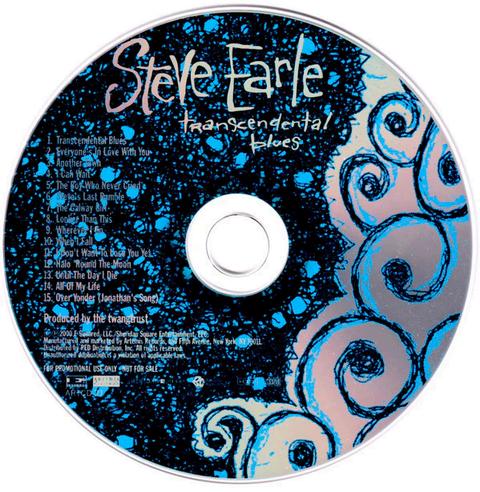
WEARANDTEAR
there'ssomethinginthestatic
BySharmeenImran
there’s a hopeless drive in all of us to make the things we love last forever we hold them close, carry them with us, revisit them time and time again until, inevitably, they begin to unravel whether it’s a physical object or an emotional experience, they all eventually degrade under the weight of time, despite our attempts to refute the atrophy it brings
my favorite sweater, a black knit with red lettering–‘i don’t smoke– reminds me of the mitski song. it’s soft, worn to just the right texture, familiar in a way that only something repeatedly used can be. but with each wear, the fabric thins, seams loosen, and the wool pills. soon it will cling to me more in memory than in comfort, and soon, it will become a fragile ghost of its former self. i will try to keep it alive, i will hem and stitch and pick off the fluff, but no amount of careful upkeep will stop it from falling apart.
i remember my first copy of the lightning thief. i was eight and carried it with me everywhere, like an oath i had to keep. its corners bent from being stuffed into backpacks, the cover scuffed and creased from endless readings. the spine cracked from being opened and reopened so many times, the pages thinned and worn. my grubby hands stained the pages with whatever an eight year old could get on her hands. by the time i had replaced it with its sequel, the lightning thief looked as if it had been through an odyssey of its own. that book was my constant companion, but the more i held onto it, the more it began to disintegrate in my hands.
my family has tapes of birthdays, holidays, little moments that we watch over and over again. i watched myself grow up on screen, but with each viewing, the footage itself degraded. dvds scraped up from being shuffled in and out of cases, cassettes chewed up by the vcr. image and sound warped, distorted by time and use. eventually, we began creating backups of backups of backups, clinging to the hope that we could somehow preserve those memories forever but no matter how many copies we make, nothing can truly be immortalized not when the medium itself is so fragile the weight of the object pulls it closer to ruin, wearing it down until the people on screen are unrecognizable their shapes linger in the tv static, burned into the screen as shadows of what they used to be but even the snow that crackles on the display fades to black
during the last month of my senior year in high school, i played “not strong enough” by boygenius on repeat for weeks, listening to the lilt in lucy dacus’ voice until it became ingrained in my mind my record was played 121 times on june 23, since i played it on loop for both exams that day, and on my drive home, and in my kitchen as i contemplated the end of my childhood at first, it was electric every chord buzzing in my chest, every lyric ringing in my head like it was written just for me. but after my exams, something changed. the song scraped against my eardrums, and i couldn’t bear to listen to it anymore. i refused to press play again; all i heard was noise. the song hadn’t changed i had. i was now someone who had listened to this song a couple hundred times, and this new me was not strong enough to deal with this much repetition.
it happened with steven universe, too. after finishing the series with my girlfriend, i felt hollow, desperate for the joy it once gave me. we’d watched the final episode of all the characters saying goodbye, curled up in bed as steven drove away and the credits rolled. we both cried a little bit, not wanting this experience we shared to end. for weeks we had watched episodes on our morning commute, something to soften the blow of getting up at 6am, and i just wanted that warm feeling back.
so i did what we all do when we don’t want something to end i started again from the beginning (though my girlfriend didn’t want to) this time, the experience was different; the love i’d felt the first time around was there, but it was dulled the emotional highs didn’t hit as hard as i had no one to react with, the surprises felt more like echoes because i had already learned all there was to know scenes that had once moved me left me feeling emptier, because i knew what was coming, i knew why i was here i watched it unfold with the shadow of my first experience cast over me. it wasn’t the same, and trying to relive it only reminded me of how much it had changed.
this is the nature of overconsumption the more we cling to the things we cherish, the more they slip through our fingers. the things we love, when experienced too often, too intensely, begin to deteriorate, both physically and emotionally. the objects wear down the books, the tapes, the sweaters until they barely hold together. and the

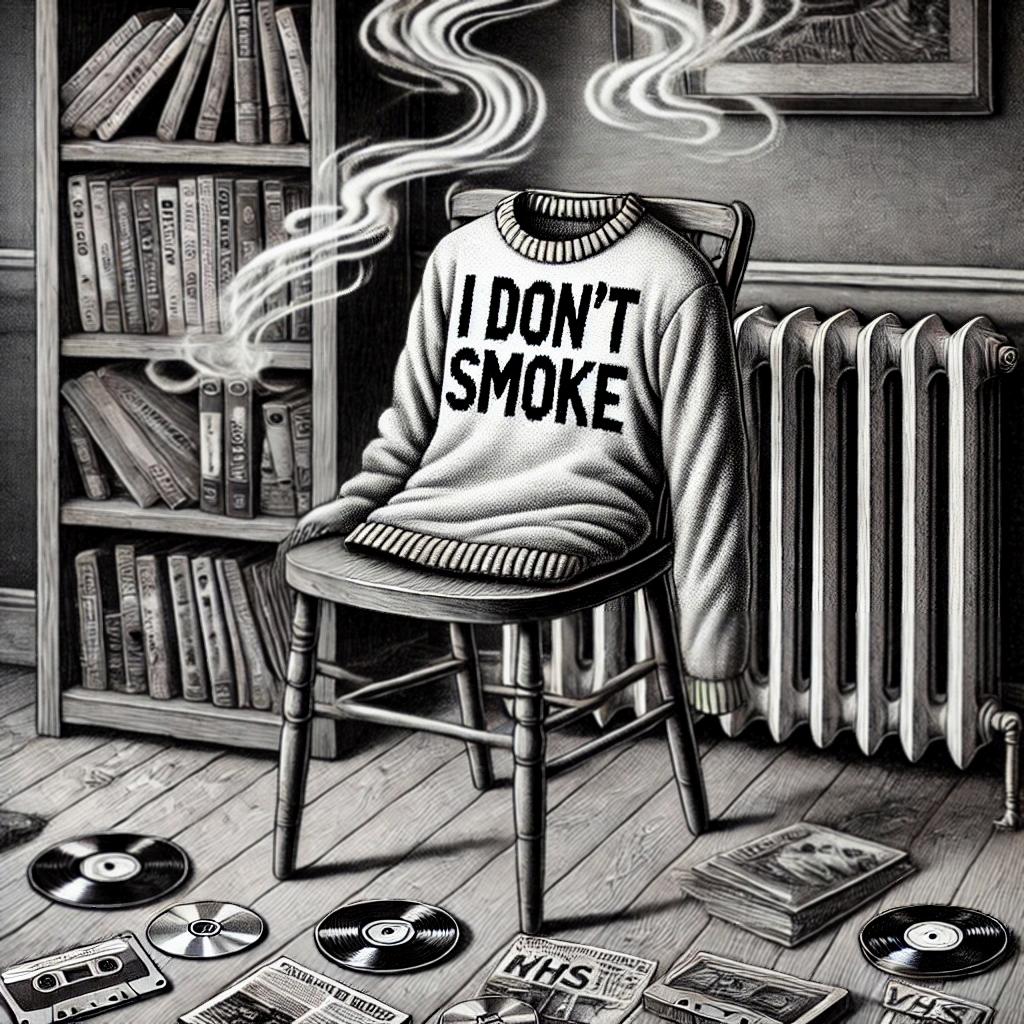
GROOVIN' THROUGH THE '60S: VINYL AND AMERICAN YOUTH
By Adela Cucu
In the 1960s, vinyl records gained significance in the media landscape by allowing young people to select and listen to music of their choosing, free from the influence of state-controlled radio and television (Siegfried, 2006) As a personal medium, records became a form of ‘cultural capital,’ and enabled youth to define their
identities and values with greater precision, fueling rebellion and activism. By amplifying protest songs opposing the Vietnam War, championing the civil rights movement, and inspiring the women’s liberation movement, vinyl records became a powerful tool for mobilizing youth activism and challenging societal norms.
Vinyl records, particularly in the 20th century, became the primary medium for distributing music, replacing earlier formats like cylinders and shellac discs (Wilson, 2022). This development allowed for mass production and distribution of recorded music, making music more accessible to a broader audience. Vinyl provided higher sound quality, better durability, and the ability to store longer recordings than its predecessors, which significantly advanced music technology (Siegfried, 2006).
Firstly, vinyl records played a pivotal role in spreading protest music during the Vietnam War era, with artists like John Lennon and Yoko Ono reaching a wide audience and shaping youth identities in the United States Through music, young people could connect with political activism, leading to the growth of grassroots movements that challenged the status quo (Wilson, 2022) In 1969, Lennon and Ono released the song “Give Peace a Chance,” which helped galvanize the anti-Vietnam War protests (Keplan, 2003) Journalist Louis Kaplan (2003) notes that, instead of dismissing TV and newspapers as mere tools of corporate control, Lennon and Ono aimed to “work within the mass media, to use them, briefly and sporadically, against the system in which they functioned ” When the song came out on vinyl, 900,000 physical copies were sold in the United States (Rodnitzky, 1999), and youth countercultures began to emerge, such as the hippie movement.
According to Dahal (2021), the hippie counterculture reached its peak during the height of the Vietnam War, when many young people, disillusioned by the conflict and the values of mainstream society, sought alternative ways of living. Dahal (2021) notes that, “thousands of young men refused to join the army…the Hippies left their homes and lived in communities with other young people where they wanted to live in peace and love.” This collective desire to create a more harmonious world not only opposed the war, but also represented a broader societal shift away from conformity to embracing a lifestyle rooted in personal expression and anti-authoritarianism. The movement's embrace of peace and love became both a form of protest against the war and a call for social and political change.
Furthermore, during this time, music became a key medium for expressing civil rights and social justice, especially among youth, who used it to voice their opposition to racial segregation, discrimination, and the violent injustices faced by Black Americans. A strong sense of independence and rebellion was created. This was especially true for African American veterans who returned from fighting overseas after the Second World War, only to face denial of the equality they had experienced in the military when they came back home and tried to find work (Dahal, 2021) As Arvind Dahal (2021) states, “their frustration with social injustice helped fuel the civil rights movement, and the concept of ‘black power’ grew stronger ” As a result, young people became more involved in countercultural music
Albums released during the 1960s played a key role in advancing civil rights and promoting social justice, with artists like Marvin Gaye, Nina Simone, and The Staple Singers using their music as a form of political activism (Rodnitzky, 1999)
However, the song “We Shall Overcome” became the anthem for the Civil Rights Movement, encouraging young people to take action (Rodnitzky, 1999). American folk singer and activist Pete Seeger took up the song and contributed to its widespread popularity by leading it at rallies and protests (Adams, 2013). The lyrics say, “We shall overcome someday. Deep in my heart, I do believe,” and Adams (2013) writes, “it is not a marching song. It is not necessarily defiant. It is a promise.” Importantly, “We Shall Overcome” began as a folk song, a work song sung by slaves in the fields, until it was politically adopted in the mid-1940s, and eventually gained even greater prominence during the 1960s (Adams 2013). With the rise of this music came the rise of social justice campaigns such as the Student Nonviolent Coordination Committee (SNCC) and the American student movement (Eyerman and Jamison, 1995), where protests, sit-ins and marches were organized as a way to amplify the voices of the youth (Thurgood Marshall College Fund, 2019).“The songs provided a sense of identification as well as rallying strength to resist authority,” note Eyerman and Jamison (1995), specifying how they are the product of rebelling and courageous identities Ultimately, this music which was distributed on records, bridged the gap between different racial, social, and cultural groups, forming a collective voice
Finally, with the civil rights movement in full swing, women became inspired, and the women's liberation movement of the 1960s emerged This movement began in 1966 and was closely intertwined with youth activism as well, when young women involved in the “New Left” activism broke away from male-led radical organizations like the SDS (Students for a Democratic Society) and SNCC (Student Nonviolent Coordinating Committee) Rodnitzky (1999) points out that, in contrast to the suffrage movement of the past, this new wave of feminist music in the early 1960s was more assertive, with goals that addressed deeper societal structures. Vinyl recordings began to feature explicitly feminist messages, such as the fight for better opportunities, higher wages, and fair treatment (Janowiecki, 2015). Female artists like Joan Baez and Janis Joplin were crucial figures in the 1960s counterculture, using their music to defy traditional gender roles and promote feminist ideas, especially among young women influenced by the principle of fighting against personal and societal injustices (Rodnitzky, 1999). Songs such as “Diamonds and Rust” by Baez and “Get It While You Can” by Joplin stand out as powerful examples of how these women used their platforms to convey themes of personal empowerment, emotional independence, and resistance to societal expectations.
As the women's liberation movement gained momentum, “Diamonds and Rust” spoke directly to the growing consciousness of young women who were rejecting the traditional roles of wife and mother, as well as the broader social constraints placed on them (Philpot, 2024). It resonated with women who were seeking not only equality in their personal lives but also the freedom to define themselves outside of patriarchal norms. Similarly, “Get It While You Can” recorded by Janis Joplin became an anthem of liberation and defiance, particularly for young women. The song, delivered with Joplin’s signature raw emotion and powerful vocal performance, challenges societal expectations that women should wait for permission or follow prescribed paths “Get it while you can” is a message

Anything Not Saved Will Be Lost
By Sharmeen Imran
The Internet Archive servers rest in an abandoned church, a quiet relic in the fog-bound city of San Francisco In the shadowed vault of this old church, as though salvation had a form you could pin down, they stand in rows humming forgotten stories to anyone who might listen. Today’s Library of Alexandria lies under the stained glass, preserving memories as fragile as the light filtering through a window.
What’s gone missing is held here like a prayer, within a cathedral of retrieval and recollection. And all this because, as the adage goes: Anything not saved will be lost.
This kind of place feels almost inevitable, doesn’t it? After all, what could be more natural than this pursuit, than to try and catch memories falling from the sky? We clutch at nostalgia, tie it to technology, let our yearning find purchase on wires and bytes. It does not matter that each piece of data is as mortal as we are. Still, we hold it close, hoping it might outlast us, that it might fill in some of the gaps we can’t bear to admit exist in our memory.

The digital archive is a vision both secular and sacred, a place of strange pilgrimage. People are drawn here by a need that runs deeper than curiosity. We crave what has faded from view long-lost TV shows, childhood cartoons, obscure songs that haunted us in some half-remembered moment They are pieces of our identities that slipped through our fingers, elusive memories that time tries to make strangers In these walls of ones and zeroes, there are echoes of old forums where strangers shared fragments of their lives, saved because someone, somewhere, knew that otherwise they’d disappear It’s easy to imagine that in some future, our children or their children will look upon this stored memory the way we might look at ancient tablets scratches of civilization, glimpses into what we once cherished, feared, adored
And so we archive We build our servers, create backups, post screenshots, comb the forgotten corners of the internet, all in an attempt to keep memory from dissolving entirely. It’s easy to romanticize this place, a digital cathedral with rooms and sub-rooms filled with pieces of the past. But the Internet Archive is no Ark of the Covenant, no magic chest that can preserve everything perfectly. Instead, it’s a flickering votive a light we know can only last for a while, though we hope it might endure a little longer.
Lost media occupies a strange place in the cultural psyche, halfway between folklore and archaeology. That takes form in places like r/lostmedia, a community of people scouring the internet like pilgrims, searching for fragments of what’s been lost. If you scroll through the posts, you’ll see a thousand versions of the same quiet plea: Does anyone remember this? And someone almost always does. It might be a five-second clip from an obscure ‘90s music video, or a scene from an art-house film that’s practically unknown. Somewhere, someone remembers, and often, they’re willing to hunt down proof of it to share. In these digital vaults, people gather to build a more collective memory, resurrecting fragments from personal histories and connecting them to a larger whole.
These communities don’t simply recover content; they recover connection. Through these fragments, people find others who’ve seen the same glimpses, shared the same passing feelings. This collective remembering is about filling in the blanks in our own stories, not just for the satisfaction of reclaiming something lost, but because it allows us to bring pieces of our past into the present, to affirm that we and the things we loved were real
Lost media resonates so profoundly because, in some ways, it reflects our own fading memories Not every piece of lost media has value to every person, but to those who remember it, it becomes an anchor, a proof of what once was The recovery of a fragment becomes a way of preserving a moment, one that would have otherwise vanished And when these memories are found, even as small, pixelated shadows of the past, they return to us as something solid They help us see our lives in reverse, like looking through a telescope backwards
The digital age promises permanence, but in reality, data is incredibly ephemeral Servers die, formats are abandoned, technology evolves. There’s a strange irony here: the very systems we believe will immortalize our experiences are prone to decay and obsolescence. VHS tapes rot, websites go down, CDs scratch, and hard drives break. As technology advances, older formats are tossed aside, leaving many of us with only fragments, photographs kept without the negatives. And while analog forms can wear down or break, digital forms are even more vulnerable; they can disappear with the click of a button, become unreadable, or vanish entirely as the platforms we depend on evolve past them.
This awareness of our data’s fragility is part of what drives people into communities like r/lostmedia, where every recovery is a tiny victory over the inevitability of loss. Here, the shared goal is not just to recover content but to assert that the past still holds weight. These fragments, after all, represent pieces of ourselves of our identities, of the worlds we constructed in our minds, of the things that made us feel. To recover them is to declare that those moments weren’t incidental; they mattered, and they deserve to be remembered.
For those seeking lost media, memory is less about accuracy and more about feeling. This is why recovering these pieces brings a strange comfort: it’s not always about remembering perfectly, but about preserving a feeling that time has tried to steal There’s an almost ritualistic quality to the way people go after these lost things, guided by the nostalgia that tethers them to childhood afternoons, late nights watching TV, or the songs they couldn’t stop humming as teenagers They hunt not just for the media itself, but for the person they were when they first saw it
And there’s something inherently sacred in this work Each piece recovered an episode, a song, a blog post is like moments held in amber, and in a world where everything feels replaceable, they carry a weight that cannot be replicated
That’s why the Internet Archive as a church is more than a fitting metaphor; it’s a reality. Just as parishioners preserve their faith, the archivists preserve these relics, holding them in reverent hands, cataloguing them so that those who come later will remember. It’s a kind of secular faith a belief that memory has worth, that these tiny pieces of our past can grant us a kind of immortality. Like prayer, it’s a collective effort, and like prayer, it depends on trust, on the hope that the act itself will somehow, against the odds, make a difference.
In some future time, it’s likely that this church will be gone, the servers switched off, the green blinking lights extinguished forever. But the desire to preserve to hold on to whatever fleeting thing we can, for as long as we can will remain. Nostalgia has always been a deeply human instinct; the urge to reach back, to keep a hand on what we fear losing. The world moves forward, but we keep looking back, catching bits of what we leave behind, knowing that while we can’t hold on to everything, some things are worth holding onto all the same.
Because memory is fragile, and perhaps our greatest act of hope is to trust that even in its fragile state, memory has meaning We archive our memories not because they are unchanging, but because they remind us that we once lived and felt deeply The memories will fade, the servers will hum a little quieter, but for now, they remain the votives flickering against the dark, preserving a little light, one frame at a time
Books Are Getting More Expensive, Did You Notice?
By Annika Lin
Books, I mean REAL books, are getting more expensive. According to BookNet Canada, the price of printed books has increased over five years. The average prices of paperback have increased by 16%, and average prices of hardcovers have increased by 14%, meaning that readers in 2024 spend approximately $3 more than readers in 2019 for the purchase of printed books (Zara, 2024).
Various factors may contribute to the rising price of books. For instance, production and publication costs which include the costs of editing, designing, and distributing physical books may be passed on to the consumers. But more importantly, consumer demands, such as preferences between printed books and ebooks, also play an important role in impacting the price of books (The Wall Street Times Staff, 2025) Statistics show that printed copies still hold 66% of the total book sale, but eBooks have a higher sales trend in comparison (Hoffman, 2023) Although ebooks have yet to disrupt the position of printed books in the industry, this data suggests that ebooks could be a rising trend among future readers Sure, ebooks have several advantages over physical copies. Statistics show that the average price of ebooks is from $0.99 to $15, whereas physical copies could cost from $10 to $30, and prices also vary between paperback and hardcover books (E-book Experts, 2024). Generally, ebooks are more affordable than physical copies. In addition, ebooks are convenient. Readers can access their collections at the tip of their fingers. One book, ten books, or hundreds, even thousands of books, can all be accessed easily through one’s electronic device. It is like carrying a personal library around, and more importantly, it is often very lightweight Some ebook readers on Reddit even claim that they experience the sense of immersion better when reading through ebooks, as it is “not as obvious to see how much you’ve read or how much time has passed ” The act of scrolling or pushing a button also requires less effort in comparison to turning a page. Although digital forms of media such as ebooks are often treated as the replica or replacement of their physical form, they often fail to capture the exact feelings that we connect with. In the end, they are fundamentally different. Studies such as Lemken (2012) examined the

difference between reading experiences when one reads from paper and when one reads from a screen. Lemken’s study highlights that elements such as “spatial location, time sequence, frequency of occurrence and word meaning” are encoded into our memory as an automatic process. This process requires minimal attention and effort, but is “as effective as a mnemonic device.” On the other hand, scrolled text presentation seems to interfere with memory encoding or the formation of mental representation, as less content was recalled from screen presentation in comparison with content recalled from page presentation (Lovelace, Southall 1983). Furthermore, Myrberg and Wiberg (2015) suggest that the inability to form spatial landmarks created through the experience of reading from paper is yet a shortcoming of existing ebook formats The physicality of tangible media allows engagement in additional sensory information that sight alone can not offer, such as texture, weight, and shape After all, the ability to interact with the media physically is a unique, customized experience for us In Japanese, the idiom “Ichi-go ichi-e” ( 期 会) means “one meeting, one lifetime,” which refers to the inability to rewind the past or to recreate a particular memory. I believe that every interaction with tangible media is a unique, once-in-a-lifetime experience that can not be easily replicated. In the age of digital media where our world has become so convenient, digital copies of the same photo can be easily duplicated and sent to whoever. However, when using a Polaroid camera, that one shot can never be recreated, despite efforts to shoot the photo in the exact same way it’s still different. Tangible media seals our senses and memories in their physical form Its existence is a sign of showing it was real, it happened Maybe the internet and databases can hold information for potentially forever as long as the virtual infrastructure lasts, it relies on electricity to power In contrast, physical copies of books, movie posters, vinyl records , these tangible forms of media will not disappear or turn into a black screen. Their bare existence reminds us of a unique memory that is connected to it. It is easy to find a concert archive on the internet, but it still feels different when you hold that concert ticket or confetti in your hands, right?
The Evolution of American-Canadian Relations Through the Lens of The Toronto Star
By Emily Neto
Although newspapers continue to be produced today, past papers are crucial in assessing the prominent political, social and economic issues of the time The Toronto Star, which has been in publication since 1892, has consistently maintained a reputation as a newspaper that has aimed to shape public opinion by publishing stories in a progressive lens that advocates for labour, worker’s rights and social justice amongst other current topics. This was especially relevant in 1930, as both Torontonians and Canadians were financially struggling due to a major stock market crash and the impending doom of the Smoot-Hawley Tariff Act. Daily newspapers, such as the June 17, 1930, edition of The Toronto Daily Star, played a key role in this era, as they served as a cheap medium that communicated information that appealed to the working-class in despairing times – jobs, clearances, economic policies and overall entertainment – worked to distract the public from the realities of life. For many, the SmootHawley Tariff Act, which was issued on the day of this archived newspaper (June 17, 1930), was a source for lost hope for the depressed working class and for the relations of the United States and Canada. Yet, a sense of Canadian nationalism and protectionism was fostered. Similarly, a recent article, issued on March 4th, 2025, from The Toronto Star places Canada-U.S. relations in a similar situation. President Donald Trump has consistently announced tariffs on Canadian exports, prompting widespread criticism from the press and immediate retaliation from the Canadian government.
The history of trade wars is vast – yet these aligning circumstances allow for a rare opportunity to use both sources as a case study in the evolution of the style of news coverage of The Toronto Star from a progressive, labourfocused newspaper to a broadly national, suburban oriented publication, thus reflecting a shift in journalism from local worker advocacy to national political analysis. By comparing the coverage of both papers, it will be demonstrated how The Toronto Star has adapted its journalistic style, audience targeting, and priorities to remain relevant in an era of evolving technology.
Given that Toronto has a longstanding history, it comes to no surprise that The Star has an extensive past The paper was established in 1892 as the Evening Star by a group of printers and writers who lost their jobs in a labour dispute at The Toronto News Since its creation, the newspaper positioned itself as a “paper for the people”, thus focusing on the interests of ordinary Canadians Although the paper started with humble beginnings, it quickly gained traction as Joseph E Atkinson was appointed as the editor on Dec 13, 1899
He made sure that The Toronto Star was founded on the key principle that it would be independent of any political party, thus aligning the paper with his socially progressive principles. In the 1930s, Toronto was within the depths of the Great Depression. However, as many institutions struggled, The Star continued to grow – the monthly circulation for May 1930 (with an average of 176,000 ) reached an outstanding total of 4 5 million, and 650 employees worked for the paper It had become the largest circulation newspaper in Canada
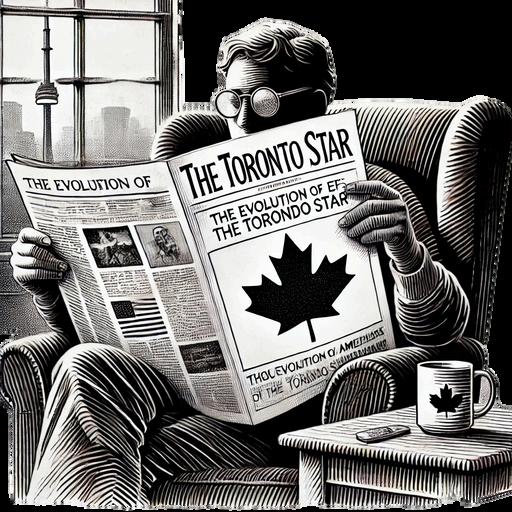
This rapid growth, even in a time of economic instability, represents how The Toronto Star’s reputation became a trusted voice for represented city-dwellers, and progressive Canadian interests a whole, reinforcing its commitment to progressive values and widespread accessibility
One critical moment in this period was the passage of the Smoot-Hawley Tariff Act, which greatly strained Canada-U.S. relations. This act was signed by U.S. President Herbert Hoover on June 17, 1930, which raised tariffs on over 20,000 imported goods, many of which were Canadian exports. This act would drastically reduce already strained living conditions and international relations.
As leaders from around the world expressed their frustrations, immediate backlash was imposed by Canada Reciprocal tariffs were placed on exports coming from the United States The June 17, 1930, edition of The Toronto Daily Star covered this development as a first-page headline, portraying the tariffs as a disastrous economic policy that would only deepen the Great Depression with many Canadian allies criticizing this decision One of the major headlines reads: “France Views United States Tariff as Death Blow to Universal Peace” At the time, France became one of Canada’s closest trading partners, fostering anti-American sentiments due to the tariffs The antiAmerican nationalism was a belief essential to Canada’s political landscape and was held by many working-class Canadians. This is relevant in the articles in the 1930 issue, as there is a consistent theme of disapproval, with one article mentioning that “the bill has had the almost unanimous disapproval of business and financial interests.” Throughout the paper, the act is framed as a policy that mainly benefits the U.S. capitalists at the expense of Canadian and American workers. This reinforces the notion that The Star mainly strides to address the concerns of the working class, as the disadvantages of the tariffs on industries like agriculture and manufacturing are prioritized and the act is criticized as an attack on Canadian jobs.
Furthermore, The Star was a key perspective in the depiction of the “clash of classes” of the era, with discourse highlighting the extreme variances in income and the crises of the times. The coverage from the 1930 edition of The Star reflects how the paper generally took a traditional pro-worker tone in the pieces – suggesting that these daily chronicles ensure that readers must remain informed about the political issues that would affect their lives. Additionally, the coverage of U.S. tariffs as a “death blow to universal peace” demonstrates how even a progressive paper like The Star can adapt its coverage to encourage tones of economic and political nationalism, warning about the dangers of American protectionism and its impact on Canadian trade. This reporting, which is deeply intertwined with the concerns of everyday citizens, is important in understanding how The Toronto Star had such a vast readership in an unstable time. However, the methods in the style of reporting contrast with the nationally focused and policy-driven journalism of contemporary editions of The Star
The early modern chronicles of The Toronto Star are described as “a business model and as a way for organizing publics” and these papers “defined their ‘mass’ public simply by residence in the city” To add to this idea, Scott Vokey describes that the imposed economic policies often ignored the amplified voices of these workers in his analysis of Toronto newspapers from the 1930s This applies to the traditional mass newspaper model, where past papers were purposefully made to be cheap and accessible to the larger masses of the public, rather than catering to the niche audience of political or economic elites Early newspapers, especially in the early twentieth century, were the dominant technology because they were revolutionary in their accessibility offering cheap, massoriented columns that defined readership by urban residency rather than class, ethnicity, or political affiliation: this is apparent in the June 17th, 1930, edition of The Toronto Star. Amongst the main headline “Ontario Soldier of Fortune Found Dead”, most of the titles pertain to ‘local’ issues such as crime cases, T.T.C. Commission updates and trials of local offences. What stands out the most is the amount of international news indicating that this was a particularly fervent time for Canadians. Particularly, page nine of the issue holds “News of All the World, The Star’s Foreign News Service”, political disruption has shifted the interests of readers claiming that “those who read The Daily Star regularly receive a liberal education in the current history of the world” and that The Star has respondents located in both suburban fields and international cities for a complete spectrum of news. Ultimately, this assertion reinforces that The Star is beginning to broaden its readership by positioning itself as a suburban and international paper. Also, these headlines, mainly focusing on bankruptcy and unemployment highlight how The Star aimed to cover issues that were important to the urban residents of Toronto and the working-class Canadians, rather than catering towards the political elites or interests of the high class.
Interestingly, Canada is currently in a similar situation, and we may use this to our advantage in comparing the shifts in journalistic approach. The Toronto Star’s coverage of Trump’s 2025 tariffs on Canada and Mexico, similarly, mirrors its 1930 coverage of the Smoot Hawley Act, but with a more nationalized and neutral tone. The March 4, 2025, article mainly highlights Trudeau’s diplomatic response, Ontario’s economics, and the broader financial consequences of this act, in comparison to the 1930 paper that mainly addresses how working-class Canadians would be greatly impacted Free trade has become recognized as a historical tool in preventing recessions As The Toronto Star has gained national appeal, the progressive tones that were originally established by Atkinson pertaining to the working class have become diluted as the definition of the ‘ordinary’ Canadian has shifted to
middle-class citizens The Star uses multiple lenses to report on the disadvantages of tariffs while also maintaining the appeal of protectionism, making Trump’s tariff threats appear as an attack on the neighbourly relations of the U S and Canada An important factor to consider in the comparison of these two sources is the vast shift in journalistic priorities As forms of media continuously adapt to new technologies, such as the rise of television, digital news, and city-wide expansion The Toronto Star had to change its business model to keep public appeal This is especially apparent in The Toronto Star website, as fresh and short stories are preferred; headlines emphasize that an article is recent or a four-minute-read, rather than focusing on sensationalist titles, as was seen in the 1930 edition
Lastly, Metropolitan newspapers increasingly rely on suburban audiences rather than city-dwelling readers This suggests that The Toronto Star, while still covering downtown politics and major development issues, has expanded its topics to appeal to suburban interests such as crime, infrastructure, and large-scale political issues Thus, the journalistic approach shifted drastically, as The Toronto Star transitioned from a newspaper that primarily served the interests of the working class to a wider variety of interests catering towards a suburban and national audience.
To conclude, as The Toronto Star progressed as a nationally acclaimed newspaper, its readership and reporting priorities evolved to align with shifts in the dominant middle class. In 1930, the paper was essential in conforming to the interests of working-class Canadians; there was priority given to reports about the economic struggles brought on by the Great Depression and the paper positioned itself as an advocate for labour rights and social justice. At the same time, The Star emphasized the importance of international relations and the harms of U.S. protectionism. This was seen in the coverage of the Smoot-Hawley Tariff Act as trade restrictions were communicated as an attack on Canadian workers that would deepen the economic crisis. However, by 2025, The Star’s coverage of Trump’s tariffs took on a more policy-driven, neutral tone, prioritizing government responses and strategy over direct labour concerns. This shift reflects how journalistic priorities change alongside shifts in readership, as The Star transitioned from a worker-focused, urban newspaper to a national publication appealing to suburban middle-class audiences. While the progressive values established by Atkinson remain, it cannot be argued that that it is what appeals most to the readers, as labour class advocacy is not a prominent aspect of the paper. The Star changed to appeal to a wider and more politically engaged readership that values neutral content. Ultimately, The Toronto Star’s evolution demonstrates how journalistic priorities adapt to societal and technological advances while continuing to shape Canadian perspectives on trade, policy, and economic relations.

AI and the Rise of the To-be Worker in Corporatized Universities: The Death of the Student
byCindyLiang
Artificial Intelligence (AI) technologies are often under the umbrella of ‘unauthorized aid’ in classrooms, as outlined in our very own University of Toronto’s Code of Behaviour on Academic Matters (University of Toronto Governing Council 3). However, as technology industries grow and technologies refine, the use of AI in classrooms continues to be a contentious topic of discourse within academia and institutional administrations Many students and educators alike are aware of Generative AI technologies, with some students being more reliant on such technologies than others with the common hope of making their university lives easier This essay will explore this sentiment of convenience within an institution which should foster critical and inconvenient thinking, as well as how capitalism perpetuates this reliance by arguing that the use of AI writing in education is a result of the technoliberalism produced by the capitalistic desire for efficiency that is entrenched in society and ultimately perpetuated by the corporatization of the contemporary Western university
Capitalism, as the primary mode within which we exist, is an economic strategy that dictates many lives today. It’s a system which naturalizes and prioritizes profit, thus, being prone to exploitative practices and ways of thought. We are incentivized and taught to live through means of capitalistic exchange to exploit as one is exploited. Under the pressures of a capitalistic model, one seeks out leisure in an attempt to “escape the mechanized labour process so that they can cope with it again” (Adorno and Horkheimer 109). Effortless leisure is thus sold to the fatigued worker as a tool to adapt to such pressures so they may be primed to be exploited again. While this leisure is effortless to the consumer, leisure costs effort from the labourers who manufacture it, thus continuing an exploitative cycle down the hierarchy of workers. Convenience and leisure become synonyms as the fatigued worker is deprived of the capacity for life outside of labour, and this cycle continues, reinforcing the market for convenience.
As Adorno and Horkheimer discuss, capitalism fabricates the necessity and sees profit from convenience, which thereby warrants the obsession with technological advances as a surrogate for labour. Coined by Neda Atanasoski and Kalindi Vora, “technoliberalism” is the idea that societal human evolution is relational to technological advancement that it is only when machines and AI can be advanced enough to take over human labour that humanity can reach its true human potential: to indulge in endless leis point out, this belief fundamentally ignores the humanity of workers t inherent exploitation of marginalized classes, races, and genders in m capitalism (4), as well as obfuscates the necessary human labour that w the production of these machines The technoliberal promise is leisur this legitimizes the system as it inherently assumes capitalism as a nat circumstance for which we must adapt naturalizing the exploitation capitalism necessitates This promise and naturalization drive the dem development of faster or more convenient technologies like GenAI today. Capitalism has an appetite for profit, so it overexerts the worke to-be worker: students.
An “incurable sickness” (Adorno and Horkheimer 109) permeates students from low-income and/or racialized immigrant families, the pioneers of such families ghastly aware of capitalistic pressures well before they even weave themselves into the labour process, which reflects in higher education. Increasingly, universities have become le of a space to foster democratic and critical imagination and dialogue, rather more of a business that markets the promise of employment an proliferates corporate values (Giroux 670).
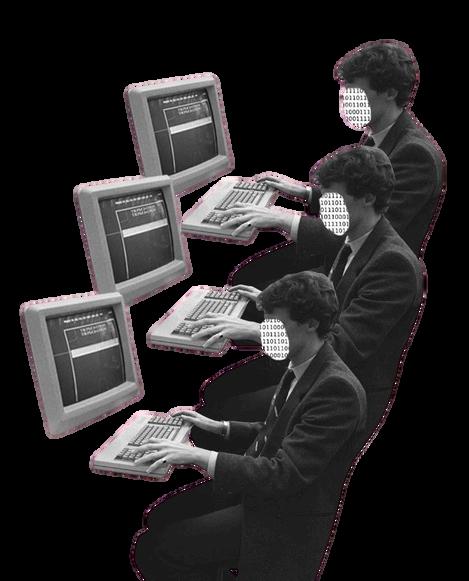
As a university student myself, this coincides with much of the common attitudes of my peers From my high school peers to the general student climate I observe on campus today, many see universities as a prerequisite for employment rather than a space to learn A large majority of my high school graduating class enrolled in Waterloo University for their acclaimed co-op programs, and many peers I know are in STEM fields for their occupational salaries Moreover, many of my non-humanities peers, and even some within the field, are conditioned to believe that “liberal arts have become useless since they do not translate directly into jobs” (Giroux 677) The need to make money is harrowingly present in students’ minds to the point where they are experiencing the very fatigue Adorno and Horkheimer’s worker experiences only their payout are the grades which seem to hold some semblance of a promise of their being employed monetarily in the future.
Students rely on AI technologies today, especially for writing, due to the convenience such tools offer for a task they deem too tedious for what it is worth. Regardless of the field, the importance of writing is lost to students who write dispassionately towards a grade. If their career paths do not directly involve critical writing, it is thus deemed a non-transferable skill, and the writing process becomes an effort-costly task with no tangible nor immediate benefit which the to-be workers can exploit. On the other hand, if the writing product satisfies the educator, they will be paid handsomely with a good grade from which they can benefit. The to-be worker economizes their efforts when they evaluate the payoff between process and outcome placed within the multitudes of stress factors they experience. Ultimately, the writing outcome prevails as more profitable as the writing process becomes lost to them as something in which one simply “produc[es] an error-free response to a prompt” (Morrison 159-160). This economization makes students prone to the persuasive advertisements AI writing technologies like Grammarly produce, which capitalize off of student stress through using metaphors like being “underwater” (0:00-0:06) as another character flaunts how “Grammarly makes [writing] easy” (0:58) The true value of writing thus gets lost when students employ AI to write for them and they are deprived of the ability to genuinely process and generate meaning and thought (Morrison 160) What these tools offer is a medium to automate writing processes to make them more convenient within the fatigued to-be worker’s life
Higher learning institutions, while explicitly against academic dishonesty, ultimately encourage capitalistic automation and efficiency because they fail to exhibit an environment outside of the capitalistic model: strict deadlines befall educators and students to mimic deadlines in the corporate office, “departments [are put] in competition with one another for resources… faculty costs [are cut]… subcontracting for everything… and so on” (Giroux 672). It is clear that these institutions, by operating within the confines of capitalistic society, are under the capitalistic impression that efficiency and profit trump all. And this model’s effects are not lost even to the most ignorant student of the inner workings of university bureaucracies as they trickle downwards and manifest in their fatigued groans. Students undergo simulations of being the fatigued worker as Western universities themselves simulate corporate environments, thus the to-be worker employs leisurely conveniences where possible.
AI use is thus inevitable in such spaces so long as capitalistic practices and beliefs permeate throughout society the academic sphere and its institutions being no less permeable. Not only is AI use a consequence of bigger issues than student laziness, but its implications can also be dire. The line between using AI to support humanity and becoming reliant on it as a surrogate is becoming blurrier as the tasks that people are readily considering to be automatable are discredited and more importantly, dehumanized (Atanasoski and Vora 4, 7). The use and development of AI to write suggests that writing is seen as something that can be mindlessly reproduced according to a formula, as opposed to a necessarily human practice that inherently fosters not just critical thinking, but human connection (Morrison 158) The automation of thinking and learning processes can only further disempower the exploited at every level, and set the stage for a society that is too focused on money and too tired to think critically Endeavours of critical human writing are antithetical to automation and necessarily must be conducted as such The inconvenience of writing of learning is important because if one employs a machine to write, they fail to engage at all in knowing as they neither somatically nor symbolically process information by having the machine process it in their stead (Ott and Mack 1).
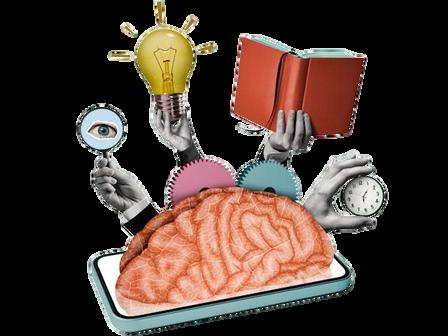
Such processes, regardless of outcome, exercise the mind to enable it to critically engage with the world around oneself Automating writing skips crucial and truly generative moments in this process, and it forfeits human connection and thinking as it lacks substantial human participation The increased reliance on such technologies for writing processes can thus diminish the crucial act of writing and thinking in and of itself
The dangers of automation and profitable efficiency are felt throughout the scholarly space As students exist within a capitalist model, learning and critical thinking become secondary to foreseeable profit Universities, existing within capitalistic contexts, need money to run, so the corporatization of these spaces is well within the expectations of capitalist regimes. However, the corporatization of universities leads also to the corporatization of students; the distinction between student and worker (or trainee) is increasingly blurred as a result. As AI is adopted for convenience, the blurring of this distinction is exacerbated. The critical act of learning is under threat as capitalistic models make it inconvenient thus more inaccessible. Given more space and time, I would incorporate disability matters into the scope of my essay and explore the ways in which disability justice complicates AI, technoliberalism, and capitalistic efficiency. In the meantime, this essay serves as an echo of past scholars and a call for a re-invigoration of communal attitudes towards education as a safe place to learn for the sake of learning, unburdened; and to have the capacity and courage to imagine one’s role within such a space.
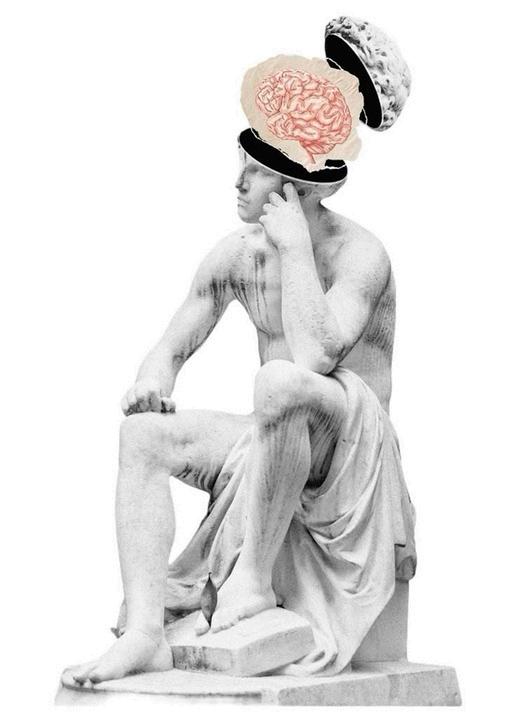

LEARNING TO UNPLUG
By Mia Negrini
Throughout the 21st century, the use of social media and online platforms for regular social interaction quickly became a societal norm Practically everyone engages in daily social media use, whether through Instagram, Facebook, or dating apps like Tinder and Bumble I was exposed to social media from a very young age and have been using it ever since The evolution of my social media usage from middle school to the present has significantly impacted both my relationship with myself and others, while I struggled to learn how to unplug
My introduction to social media in middle school happened through Instagram and Snapchat, which became my main communication tool. With my use of these platforms came a lot of self-doubt and social anxiety. Suddenly, despite being only 12 years old, I became a human version of the world’s big media industries, consumed with worry over the meaning of my content and how my audience interpreted it. Before my exposure to it, social media appeared as this new, exciting way to connect with friends. Instead, it introduced me to the toxic beauty standards present in modern society and transformed my self-image. Its effect on my mental health was drastic, especially considering my vulnerable age.
Snapchat is and has always been my least favourite app. I’ve never understood how one could hold a conversation with a friend, strictly through images. It's rather uncommunicative and inefficient for a social media app and a waste of time. What happened to gossiping about your life experiences through actual conversation? The pressure to send a photo of yourself and the self-doubt that arises when deciding on the best angle, filter, background, etc. is why I deleted the app. A few months later, I realized how confident I felt without the pressure and stress of superficially connecting with others through Snapchat By simply removing myself from the toxic online environment, I gained greater control over my life My relationship with social media apps changed, however, with the COVID-19 pandemic
When we first started quarantining in 2020, I was in the middle of Grade 9 and hadn’t had the chance to make many strong friendships I spent copious amounts of time at home reading, which soon developed into a passionate hobby During the pandemic, the social media app TikTok had become increasingly popular and many subcommunities formed on the app based on different interests I became part of the ‘BookTok’ community, which catered to users with a passion for reading like myself, and enabled me to form connections with others during the isolated time of the pandemic. Reading became about so much more than just the words on the page. Suddenly, millions of people shared my hobby and developed creative theories and artwork inspired by my favourite books. Since TikTok is an app centered around watching videos that others create, I felt no social pressure to post anything, eliminating my past anxiety surrounding social media.
The technology of BookTok provided me with a welcoming community during a lonely period of my life and allowed me to engage with a tangible form of media on a deeper level Compared to my past, it left me with a positive social media experience, a trend that has continued into my life today
As a single, second-year student in university, it is only natural for me to experiment with dating apps I started with Bumble, women make the first move, but have since moved to Hinge My experience with this form of social media has taught me a lot about myself and how to form relationships online It also gave me a much-needed confidence boost because of the large dating pool I gained access to. Simultaneously talking to multiple people who find you attractive in some way can greatly encourage self-confidence. Dating apps allow you to practice building relationships and effectively communicating with others before entering a real, long-term relationship. And yes, I know that there is a strong hook-up culture present on every dating app. However, once you learn to use them and the algorithms start to catch on to your preferences, it can be quite easy to avoid (or to get involved with, depending on what you’re looking for). It's interesting to consider how much the dating world has evolved through the advent of social media. The effects on your confidence and social skills are relatively the same despite the switch of medium, so long as you know how to use the technology you engage with. As a form of social communication, dating apps have continued to positively affect my life, preventing me from feeling pressured into anything and fostering a positive relationship with myself, others, and my social communication.
As I matured, my social media experience evolved from negative to positive, allowing me to form relationships with others and, most importantly, myself. As I got older, I realized that while unplugging from technology can be very beneficial, staying plugged in can also do a lot of good in moderation. It’s a balancing act. Social media apps can have their downsides, especially for younger children and pre-teens, but when you set boundaries, learn to unplug, and use them to your advantage, they allow you to discover great things about yourself, others, and the world around you
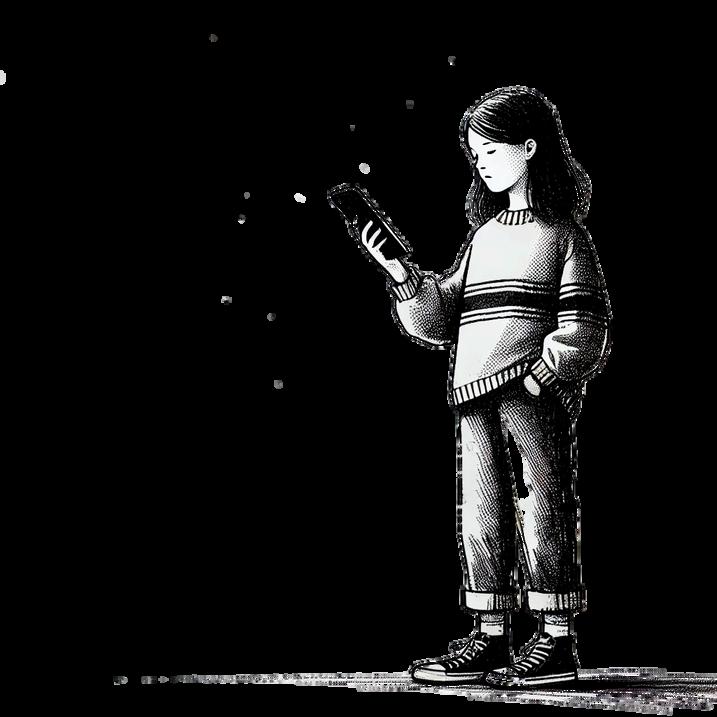
THIS IS NOT A COLLAGE
By Tara Karanovic
within the making of “This is not a collage”, I intended to channel the feelings one faces
from the extensive amount of ever-changing mediums that are at our disposal. Yet, when creating this piece, I began to reflect on the implications of an object existing as digital or tangible how these categories are not completely fixed, but rather exist as fluid states of being.
This idea is reflected in the composition of the collage with the juxtaposition of vintage “outdated” technology in the background with more contemporary technology in the foreground, signifying that we exist in an entirely different epoch than the mediums of the past. By placing these mediums in the same piece, I aimed to showcase the cyclical nature of media raising the question of whether or not today’s digital technology will one day become obsolete, replaced by another innovation in humanity’s search to ease information consumption In the center of the piece, a man appears to be expelling wires and USB plugs as they swim within the confines of a motherboard amidst this, an image of hands folded in prayer, wrapped together by the familiar iPhone charger. Each element carries a symbolic weight, and breaking them down further sheds light on my media fluidity hypothesis.
Firstly, the implied act of throwing up these pieces of technology associated with contemporary mediums was my attempt to personify the overwhelm that comes with existing in a society with such a rapid turnover rate of its media environments. While past generations may have had a singular era-defining invention, we now live in a time where groundbreaking technologies are released to the public almost yearly The wires embedded into the expulsion of the motherboard are real wires that I had cut up and glued to the collage; however, this detail is not immediately apparent in the image as it appears before you I wanted the wires to physically extend beyond the surface of the piece as if to show (1) the accessibility of the digital age over its
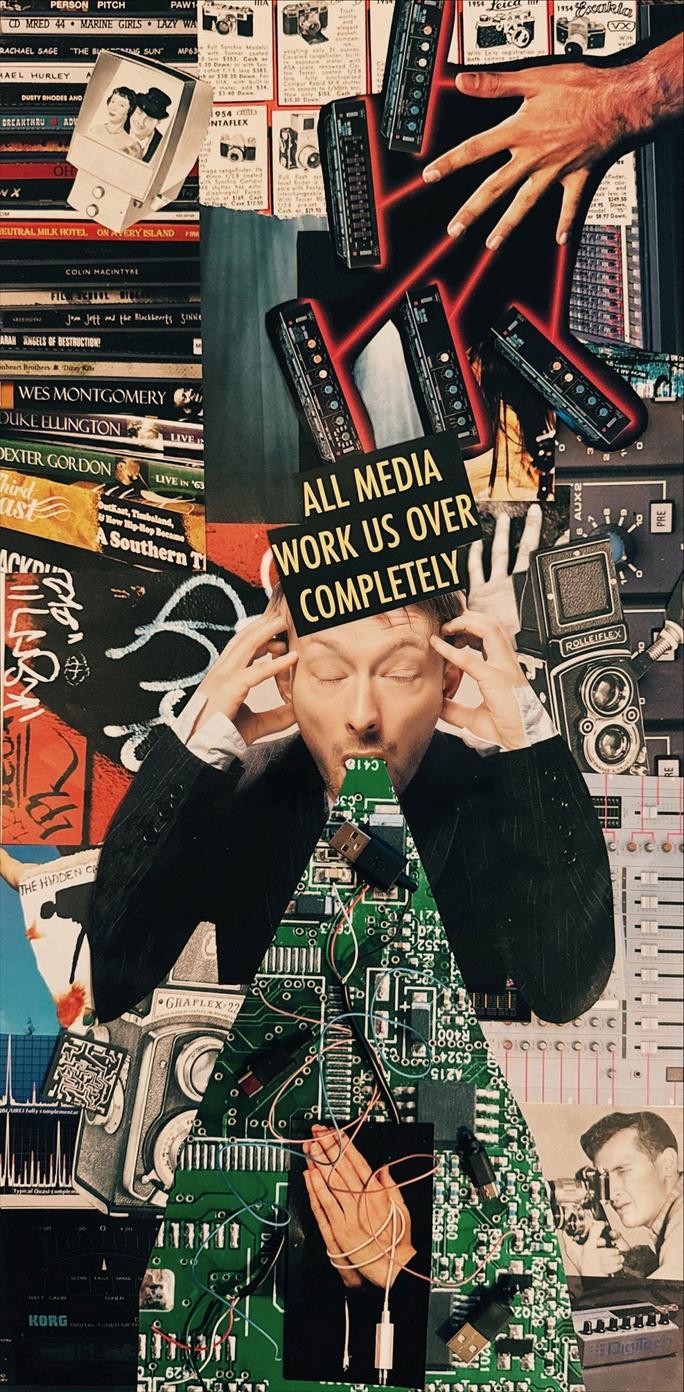
predecessors and (2) the proximity of the digital age, making contemporary technology feel within reach while pushing older technology even further into the background. Finally, the image of the hands clasped in prayer with a charger cord around them symbolizes our near-religious devotion to technological advancement to me As humans, we are incessant in our need to evolve, often without fully considering the broader consequences of progress, paralleling religious adherence where belief can sour and turn dogmatic
A quote from Marshall McLuhan planted in the piece reads, “All media work us over completely”, and I chose to include it as a sort of thematic wrapper for the collage It verbally communicates exactly what I aimed to express visually McLuhan’s words led to the reconsideration of my intent behind this project, unravelling my thoughts on the process of creating media itself how an object can transform from tangible to digital and exist, as one, the other, or both simultaneously. This thought process brought me to the conclusion that “tangible” and “digital” exist as states of being that are constantly in flux as they may intertwine in a singular medium throughout different stages of creation, which is what occurred during the making of this collage.
Originally, this piece began as digital media in the sense that the images I used were captured with a camera, processed digitally through a computing system, and then printed onto various magazines. Once printed, these digital images became tangible physical media, which I then cut up and arranged into my collage However, to submit the final piece to this journal, I had to scan the collage, converting it back into a digital format Furthermore, depending on which form you take to read this journal, the piece may be tangible in a physical printed edition, or remain digital in an online edition
This entire complex process led me to choose the title “This is not a collage”. Inspired by René Magritte’s “The Treachery of Images” (also known as “This is not a pipe”), Magritte challenges the viewer's perception of reality, arguing that a painting of an object is not the object itself but simply a representation of it (Magritte, 1929). Similarly, the piece you see before you is not a collage it is a digital scan of a collage, or rather, a digital scan of a physical medium composed of fragments of other physical mediums that were once digital themselves. The true collage exists in my home, and it has metamorphosed several times before arriving in the form you are viewing now. This is why I believe media is inherently fluid, and here I pose questions to the reader: considering my musings on the subject, would you deem the piece to be digital or tangible? After shifting between the two states multiple times, has it become a hybrid of both? Does it carry with it its previous states of existence? Or do we wish to define an object as tangible or digital solely based on how we encounter it?
What is even more fascinating is the loss of detailing and physical attributes that occur when media shifts between formats To me, the collage carries a varied texture, with some images smoother than others depending on the magazines they were cut from yet to you, they appear uniform I can pull, tug, and fidget with the wires glued to the piece while you can only see them in a static, two-dimensional form. This reinforces the notion that our position as viewers shapes our perception of media. Someone reading this on a computer sees a large image, while someone reading on a phone sees a smaller one, and someone holding a print copy will encounter an image that moves with the paper it is printed on. These subtle characteristics all influence how we experience different forms of media.
To conclude my thoughts, as we further accept this digital age, we must recognize that tangible media can and will be transformed into digital media and vice versa. The boundary between digital and physical is becoming increasingly fluid, and as technology continues to evolve, we will only see more instances of media existing in this hybrid fluid state
SOMETHING TO RELY ON:
PrintingHistorywiththeReliancePress
By Elise Cressatti, Nicole Tseng and Michelle Wong
Walking into the Print Studio in St. Michael’s College’s John M. Kelly Library, one is greeted by a large iron hand press. This imposing hand press is a Paul Shniedewend & Co. Reliance press. Its dark iron frame indicates its turnof-the-twentieth-century origins, but one should not be fooled: even over a hundred years from its manufacture, this press is still, first and foremost, a useful tool for creating printed works. This Reliance once stood in the foyer of Kelly as mere decoration, an ornamental nod to the college’s Book and Media Studies program. Recontextualized in 2024 by its new home the recently renovated Print Studio our Reliance awaited the opportunity to prove itself as a functional press once again. By combining traditional and experiential research methods, this project presents such an opportunity. Taking cues from its historical usage and incorporating our own experiences with the archival and oral records of St Michael’s College, we used the Reliance to create a print that celebrates the history that surrounds us every day, hidden in plain sight
Historical Context 1.
We begin our history of the Reliance with a necessary truism: technologies once considered cutting-edge will inevitably become obsolete in their original purpose. Like many other types of industrial manufacturing equipment, wooden printing presses were replaced with iron presses around 1800 (Rummonds 102). These iron hand presses were the standard equipment for commercial printing throughout the early and middle 19th century (Rummonds 102). Towards the latter half of the century, however, newer, more mechanized technologies such as the steampowered bed-and-platen press and the Linotype replaced the iron hand press (Moran 113–4; Saxe viii). By the turn of the century, iron hand presses were reimagined to suit jobs where a more hands-on process was advantageous (Moran 250–2). One such job was proofing; to ensure the quality of an engraving's print, printers looked for remarkably strong presses that could make a single, quick impression (Moran 250; Sword).
The Washington Press was an iron hand press developed by Samuel Rust in the 1820s (Saxe 43). It revolutionized printing throu

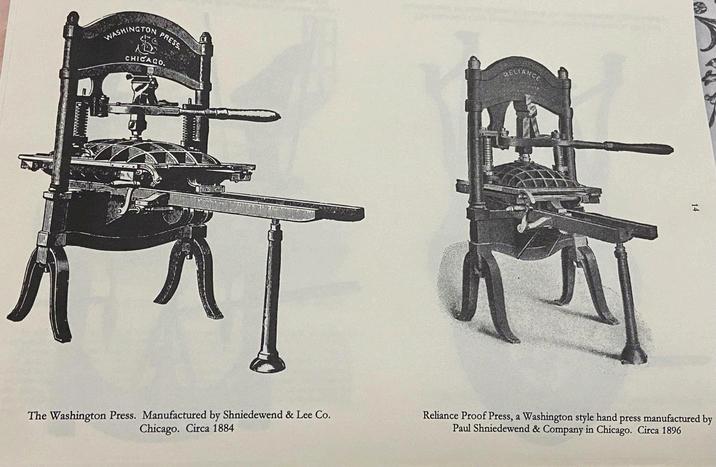
From Stern (2001)
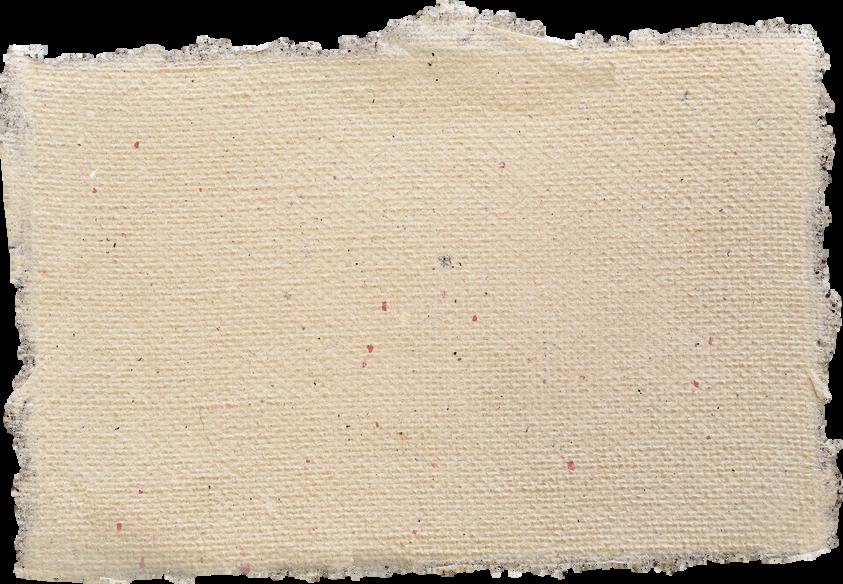

"figure 4 toggle" mechanism, which ensured uniform impressions and could be disassembled for easy transportation (Saxe 43–4). The design of the Washington Press was purchased by R. Hoe & Co., though many companies across North America imitated its shape and mechanisms (Saxe 43–5). Found in up to seven size variations, the Washington Press accommodated diverse printing needs, with some models capable of producing two full pages of a largeformat newspaper at once (Moran 250–1). As with many other iron hand presses originally popular for large-scale publications like newspapers, the Washington Press eventually transitioned to specialized uses, particularly proofing (Moran 250) The Washington Press not only enhanced printing efficiency, but also bridged the gap between manual craftsmanship and modern production methods, leaving a lasting impact on the evolution of printing practices and securing its place in the history of letterpress printing
The Reliance Press is one of many presses derived from the Rust & Co Washington Press It was manufactured by Paul Shniedewend & Co in Chicago between 1895 and 1911 (Gilbert) Building on the sturdy design and functionality of the Washington Press, the Reliance made advancement on its efficiency and adaptability While the Washington Press introduced the revolutionary "figure 4 toggle" mechanism ensuring uniform impressions, the Reliance enhanced these features with strengthened platens, reinforcing tracks, and interchangeable parts to support larger and heavier photo engraved plates (Sword). These improvements were significant given the evolving demands in the late nineteenth and early twentieth centuries’ print industry. The Reliance Press was specifically marketed for proofing half-tone and process cuts, catering to the specialized needs of those printing cutting-edge engravings (Gilbert). Its manufacturing reflected the industrial prowess of Chicago as a hub for printing equipment during that era, with Shniedewend & Co. emerging as a leader in the field. The Reliance Press not only carried forward the legacy of the Washington Press but also cemented its own place in the evolution of printing technology. Its versatility, durability, and efficiency made it a favored choice among printers and a symbol of industrial innovation that bridged traditional and modern printing practices.
The provenance of Kelly Library’s Reliance reflects a rich history tied to the evolution of printing and its preservation. While company details give us a sixteen-year range, the lack of serial numbers on Reliances prevents us from learning its exact manufacture date. Before arriving at its current location, the press was owned by Don Black, a well-known Toronto-based dealer and collector of vintage printing equipment (Cathy). The press was later acquired in 2006 by the University of Toronto as part of a collaboration between the Sablé Centre for 19th Century French Studies, the Book and Media Studie
When the library’s first Print Room opened in 2007, it served as a hands-on learning tool for students exploring historical printing practices (Scott). The press continued to be used for educational purposes for several years, though it was eventually retired and later used as decoration in the library’s foyer. Following the reopening of Kelly’s Print Studio in 2024 (“reLaunch”), the press has returned to its status as a working piece of equipment Our Reliance’s journey from an industrial workshop in Chicago to a teaching tool in Toronto exemplifies the enduring significance of letterpress as a bridge between the past and present


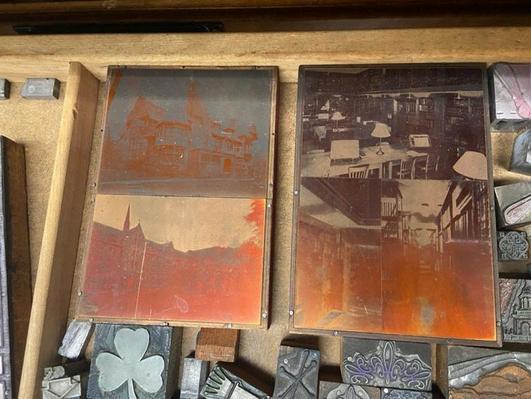

2. Design
With the Reliance’s origins as a proofing press for photo engravings in mind, we concluded that our project should incorporate photo engravings in a significant capacity. As such, we located a set of two engraving blocks housed in the Kelly Print Studio that depict a now-destroyed Victorian-era house that once stood on the St. Michael’s College campus (Black 34). Wanting to share the interesting history of this lost building that we learned from a rare chapbook, we decided to design a newspaper-like poster introducing Elmsley No. 10 and centering its photo engravings.
Our final design is just that: a poster that borrows from the design of a newspaper’s front page. The newspaper title and dateline, which take up the upper third of the page, reference the student newspaper of St. Michael’s College The Mike. The two photo engravings of Elmsley No. 10 take up the next third of the page; while we considered staggering the two with text in between, we eventually decided their centrality in the overall layout made more sense, as they were the element most connected to the press’s original use. The lower third consists of an article title,the first five lines of the article, and a masthead segmented off by dotted lines. The article’s content introduces the history of Elmsley No 10, foregrounding its late-Victorian origins a nod to the Reliance itself and its journalist former owner a nod to our newspaper design The text concludes with “cont on page 3,” despite there being no further pages, as a prompt for the reader to investigate further and learn more about the overlooked house’s history
Three typefaces make up the text of the design: the title is in 20 5-line wood type, the headline and dateline are in a blackletter-inspired 30pt gothic typeface, and the main body of text is in 18 point Bookman While using a variety of typefaces is common in newspaper design, we chose to use all serif typefaces to maintain a sense of consistency across our page The sizing of the type is also intentional; while newspapers are generally handheld and therefore can use smaller type, our poster used larger type to ensure its readability if hung on a wall

Similarly, the comparatively low number of paratextual items bylines, logos, etc. was a deliberate stylistic choice to prevent overcrowding. Altogether, our design prioritizes functionality and informativity while foregrounding the historical context of the press.

3. Process
When we began to design our project, the material limitations of the Kelly Print Room impacted our design significantly: we knew we needed photo engraving blocks, but we were limited to the handful of unlabeled engravings available in its collection. Searching through these blocks, we were struck by an image of what appeared to be one of the nineteenth-century houses on St. Michael’s campus, though none of us could recognize or locate it ourselves. Loving the confluence of printing the image of a late nineteenth to early twentieth century home on a late nineteenth to early twentieth century press, we began to research the building A conversation with an architecture student led us to Peter Skrepichuk a St Michael’s employee with access to the college’s historical records We learned from Peter that our intuition was correct: the building in the engravings was the now-demolished 10 Elmsley Place, a Victorian-era house that was previously home to the Pontifical Institute of Medieval Studies (Black 34–6) This shocked us, as we had never heard of this building’s existence despite walking daily where it once stood. In addition to his personal knowledge of the building, Peter also provided us with a limited-run chapbook detailing the history of the college’s buildings. From the information in this chapbook, as well as the oral history shared by Peter, we were able to write the article that makes up the poster’s main body of text.
The design process followed from there: we sketched initial drafts, then revised them with a mind for readability and feasibility. Some elements including decorative ornaments and a byline were removed early on to avoid cluttering the design, and the article itself was trimmed significantly during composition to increase our efficiency.
After we finished our initial composition a process filled with many starts and stops as we dropped type, misplaced spaces, and generally learned how time-consuming setting type can be we arranged our printed elements on the press with furniture. Arranging this furniture was a surprisingly difficult step, as we lacked the experience to instinctively gauge how the blocks would piece together. Once we made sure everything was tightly placed together, we did a first print with the help of Professor MacNeil. From the first run, we were able to identify four spelling errors and misplaced types, as well as four types that were not printing properly. The spelling errors were likely suspects: a ‘u’ and an ‘n’ were swapped, as a ‘d’ and a ‘b’. Several ‘e’ types in the 30pt Gothic font were not receiving ink well, leading us to deduce that they were lower than type-high; a simple replacement solved this issue After replacing these types, we printed again and noticed that a few more types were printing poorly With the help of Professor MacNeil fixing the uneven levelling of the press bed, we were able to officially finish our trial prints and begin our official print run

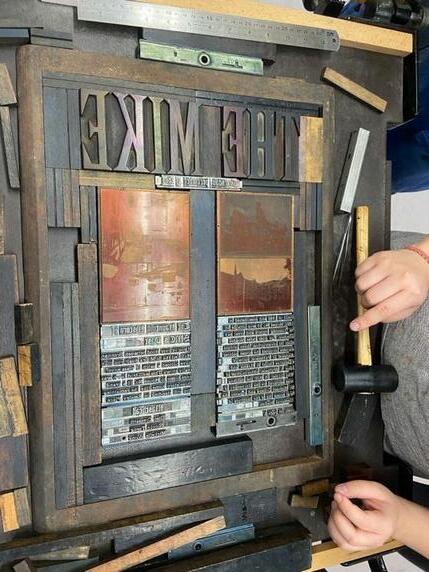

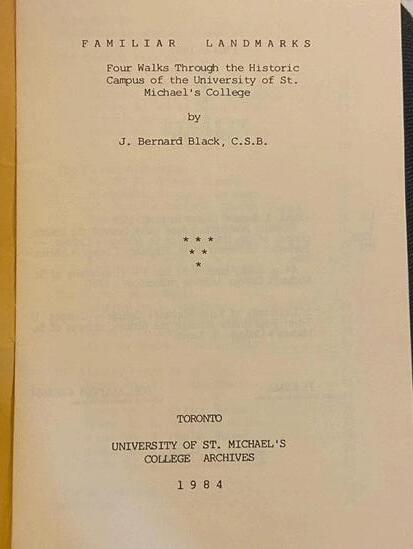


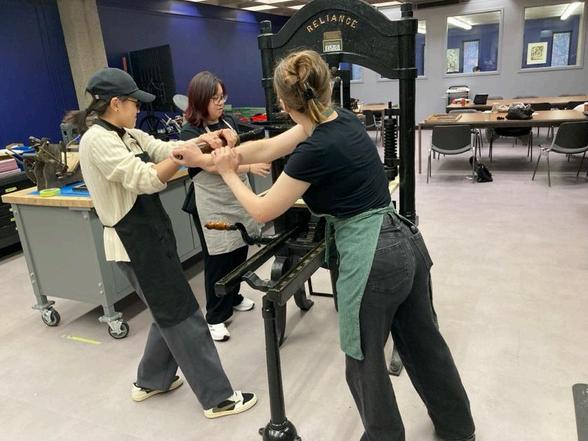





4. Reflection
Upon completing the printed element of the project, our group was united by an immense sense of relief; several times in the project, it felt as though we had met an impossible roadblock. Many of the difficulties we experienced in printing our poster are reflected in our description of the design and process itself, as these struggles were inseparable from the end product. However, the biggest issue that all members of the group faced occurred while we were conducting our provenance research. Although there is an abundance of printed scholarly and technical works that describe the Reliance as a commodity and a tool, there were few printed records of our Reliance Some details could be found through ephemera and special collection materials created by the university such as invitations, alumni magazine articles, and limited-distribution booklets (Scott; Speirs; “Campus notes”) but many of these materials were unsearchable through conventional library processes One of our most helpful early sources the Print Room catalogue created by the Sablé Centre (Gilbert) had been deleted from its original server and was only accessible through the Internet Archive’s Wayback Machine (Barr).
When we turned to oral history, we first attempted to seek out Don Black, a name found on a maintenance sticker stuck to the press; unfortunately, Black passed away in 2023 (“Obituary”). In our search for further details, we reached out to Albert Kwon, the former apprentice of Don Black; Stephen Sword, a Massey College printer who was referred to us by Kwon; Graham Scott, the journalist who wrote the article about the press arriving at the university; Nicholas Kennedy, who worked with Don Black prior to Kwon; and Jessica Barr, the USMC University Archivist, Records Manager and Privacy Officer. We were very lucky to receive responses from most of those asked, as their recollections allowed us to fill in blanks left by the sparse written record. For instance, Kwon worked at Don Black’s print shop after the press was sold, but was aware that Sword was present at the time the press was purchased (Kwon). Sword then responded, letting us know that he is not too sure about the press itself, but provided valuable information about a potentially “sibling” line of our press (Sword). Jessica Barr was able to provide us with a few web archives about the press’ purchase and early history at Kelly Library (Barr). Sadly, we did not get further responses from Graham Scott or Nicholas Kennedy. In our process, we also read interviews with Don Black to learn more about him, his store, and the larger letterpress community in Toronto.

Our research process was definitely riddled with limitations; ironically, most of these limitations revolved around a lack of printed material. The press itself had no serial number printed or embossed on its frame. The acquisition of the press seems to have involved few to no printed records of purchase or sale. The digital items recording its presence are hosted on fragile servers, often prone to deletion. While oral tradition can make up for this lack, human memory is just as fragile: both owners of Don Black Linecasting, Don Black and his son, Craig Black, have passed away While it was rewarding to locate as much information as we did, there is also a great sadness that we will likely never fully solve the mystery of the press’ provenance However, our ability to use the Reliance to share the story of another nearly forgotten Victorian artefact Elmsley No 10 speaks to the press’ ability to record humanity’s fleeting history Our fifteen posters will live on as proof of the home’s existence, and as proof of the Reliance’s continued usefulness, hopefully inspiring future printers.


Work Cited by Contributors
Transcendence and Tangibility by Felan Parker
Barad, Karen Meeting the Universe Halfway: Quantum Physics and the Entanglement of Matter and Meaning Duke University Press 2006 Crawford, Kate Crawford and Vladan Joler Anatomy of an AI System: The Amazon Echo As An Anatomical Map of Human Labor, Data and Planetary Resources. SHARE Lab and AI Now Institute, New York University, 2018, https://anatomyof.ai/. Earle, Steve Transcendental Blues E-Squared, 2000 Fan, Lai-Tze “e-Waste Peep Show: A Research-Creation Project on the (In)visibility of Technological Waste ” Right Research: Modelling Sustainable Research Practices in the Anthropocene, edited by Chelsea Miya, Oliver Rossier, and Geoffrey Rockwell, Open Book Publishers, 2021, pp 257-273 Holt, Jennifer and Patrick Vonderau. “‘Where the Internet Lives’: Data Centers as Cloud Infrastructure.” Signal Traffic: Critical Studies of Media Infrastructures, edited by Lisa Parks and Nicole Starosielski, University of Illinois Press, 2015, pp. 71-93.
Peters, John Durham The Marvelous Clouds: Toward a Philosophy of Elemental Media University of Chicago Press, 2015 Starosielski, Nicole The Undersea Network Duke University Press, 2015
Through the '60s: Vinyl and American Youth By Adela
Adams, N (2013, August 28) The Inspiring Force of “We Shall Overcome ” NPR https://www npr org/2013/08/28/216482943/the-inspiring-force-ofwe-shall-overcome Dahal, A (2021)
Anti-War Messages in the Songs of John Lennon JODEM: Journal of Language and Literature, 12(1), 1–16 https://doi org/10 3126/jodem v12i1 38709 Eyerman, R., & Jamison, A. (1995).
Social Movements and Cultural Transformation: Popular Music in the 1960s. Media, Culture & Society, 17(3), 449–468. https://doi org/10 1177/016344395017003006
Janowiecki, M L (2015) Protesting in the 1960s and 1970s American Archive of Public Broadcasting https://americanarchive org/exhibits/firstamendment/protests-60s-70s Kaplan, L , (2003, Feb 26)
“War is Over! If You Want It”. M/C: A Journal of Media and Culture, 6,(1). Retrieved Month Dn, Year, from http://www media-culture org au/0302/06-warisover html
Philpot, L (2024, April 1) The story behind “Diamonds and rust”, a song by Joan Baez, about Bob Dylan Onstage Magazine https://onstagemagazine com/the-story-behind-diamonds-and-rust-a-song-by-joan-baez -about-bob-dylan/ Rodnitzky, J (1999) The sixties between the microgrooves: Using folk and protest music to understand American history, 1963–1973, Popular Music & Society, 23:4, 105-122, DOI: 10.1080/03007769908591755
Siegfried, D (2006) ‘Underground’: Counter-Culture and the Record Industry in the 1960s In: Führer, K C , Ross, C (eds) Mass Media, Culture and Society in Twentieth-Century Germany New Perspectives in German Studies Palgrave Macmillan, London https://doi org/10 1057/9780230800939 3 Songfacts. (2014). Get it while you can by Janis Joplin - Songfacts. Song Meanings at Songfacts. https://www.songfacts.com/facts/janis-joplin/get-itwhile-you-can Thurgood Marshall College Fund. (2019, February).
HBCUs played a critical role during Civil Rights Movement https://www tmcf org/events-media/tmcf-in-the-media/hbcus-played-a-critical-role Wilson, J (2022) Bugging Out: Protest Music, the Vietnam War and the American Counterculture (Order No 30365401) Available from ProQuest Dissertations & Theses Global; ProQuest Dissertations & Theses Global Closed Collection. (2800161934). http://myaccess.library.utoronto.ca/login? qurl=https%3A%2F%2Fwww proquest com
Books are getting more expensive, did you notice? By Annika Lin
Aline Zara. "Buying Print Books in Canada 2023." BookNet Canada, 30 Sept. 2024, https://www.booknetcanada.ca/blog/research/2024/9/30/buying-print-books-in-canada-2023 Caroline Myrberg, Ninna Wiberg “Screen vs paper: what is the difference for reading and learning?” UKSG Insights, 7 Jul 2015, https://insights uksg org/articles/10 1629/uksg 236?report=reader E-book Experts "How Much Does a Book Cost?" eBook Writing Experts, 20 Dec 2024, ebookwritingexperts com/blog/how-much-does-a-book-cost Lisa Schoenhofer. "Ichi-Go Ichi-E: How Young People Can Create Moments That Count." NAJC, https://najc.ca/ichi-go-ichi-e-how-young-peoplecan-create-moments-that-count/ Lovelace, E A , and S D Southall "Memory for Words in Prose and Their Locations on the Page " Memory & Cognition, vol 11, no 5, 1983, pp 429-34 doi:10 3758/bf03196979 PMID: 6656602
The Wall Street Times Staff "The Rising Cost of Books: Understanding the Factors Behind Increasing Prices " Wall Street Times, 28 Feb 2025, wallstreettimes.com/the-rising-cost-of-books-understanding-the-factors-behind-increasing-prices/. Tony Hoffman "Ebooks vs Printed Books: Statistics & Sales Trends " Scanse, 2023, https://scanse io/blog/ebooks-vs-printed-books-statistics-salestrends/ "Why Is Reading an Ebook Version So Much Faster?" Reddit, https://www.reddit.com/r/RomanceBooks/comments/mc96as/why is reading an ebook version so much faster/.
Groovin'
Cucu
Work Cited by Contributors
AI and the Rise of the To-be Worker in Corporatized Universities: The Death of the Student by Cindy Liang
Adorno, Theodor A. and Max Horkheimer. “The Culture Industry: Enlightenment as Mass Deception.” Dialectic of Enlightenment, Stanford University Press, pp 94-136, 2020
Atanasoski, Neda, and Kalindi Vora Surrogate Humanity: Race, Robots, and the Politics of Technological Futures Duke University Press, 2019 “From Notes to Noticed | Write it With Grammarly ” YouTube, uploaded by Grammarly, 19 August 2024, https://www youtube com/watch? v=c7BTS7QOEDM.
Giroux, Henry A “Democracy’s Nemesis: The Rise of the Corporate University ” Cultural Studies ↔ Critical Methodologies, vol 9, no 5, 2009, pp 669695
Morrison, Aimee “Meta-Writing: AI and Writing ” Composition Studies, vol 51, no 1, pp 155+ University of Massachusetts Boston, Gale Literature Resource Center, 2023 link gale com/apps/doc/A759155199/LitRC?u=utoronto main&sid=summon&xid=4da41026
Ott, Brian L., and Robert L. Mack. Critical Media Studies: An Introduction. 2nd ed., Wiley-Blackwell, 2014
University of Toronto Governing Council “Code of Behaviour on Academic Matters ” 2019 PDF https://governingcouncil utoronto ca/system/files/2020-03/Code%20of%20Behaviour%2 0on%20Academic%20Matters%20July%201%202019.pdf.
The Evolution of American Canadian relations Evolution through the lens of The Toronto Star by Emily Neto
Kottman, Richard N “Herbert Hoover and the Smoot-Hawley Tariff: Canada, a Case Study ” The Journal of American History62, no 3 (December 1975): 609 https://doi org/10 2307/2936217
Lee, Dwight “Free Trade: Helping Ourselves While Helping Others ” Routledge eBooks, January 3, 2011, 56–66 https://doi.org/10.4324/9780203838877-8.
Rodgers, Scott “The Journalistic Field and the City: Some Practical and Organizational Tales about The Toronto Star’s New Deal for Cities ” City & Community 12, no 1 (March 2013): 56–77 https://doi org/10 1111/cico 12002
Rubin, Josh, Tonda MacCharles, and Robert Benzie “Donald Trump Imposes 25% Tariffs on Canadian and Mexican Goods ” Toronto Star, March 4, 2025 https://www.thestar.com/politics/federal/trump-tariffs-canada/article e7199158-f83f 11ef-8a84-e7c97ae9953e.html.
“Toronto Daily Star ” Toronto Daily Star (1900-1971), June 17, 1930, 1–38 http://myaccess library utoronto ca/login? qurl=https%3A%2F%2Fwww proquest com%2 Fnewspapers%2Fpage-6%2Fdocview%2F1437329126%2Fse 2%3Faccountid%3D14771
Toronto Star. “The Dirty Thirties,” May 1, 2021. https://www.thestar.com/sponsored sections/building-the-gta--100-years/the-dirtythirties/article e0b9f817-38f4-5600-ac32- ab61fb84708d.html.
Toronto Star “The Toronto Star,” 2023 https://www thestar com/site/static-pages/history-of-the toronto-star html
Vokey, Scott “Inspiration for Insurrection or Harmless Humour? Class and Politics in the Editorial Cartoons of Three Toronto Newspapers during the Early 1930s ” Labour / Le Travail 45, no https://doi org/10 7202/1016581ar (2000): 141 https://doi.org/10.2307/25149045.
This is not a collage by Tara Karanovic
Magritte, R (1929) The Treachery of Images Los Angeles County Museum of Art
Something to Rely On: Printing History with the Reliance Press by Elise Cressatti Barr, Jessica. Re: Kelly Print Room Reliance Press Acquisition Details, 29 Oct. 2024. Black, J Bernard Familiar Landmarks: Four Walks Through the Historic Campus of the University of St Michael’s College University of St Michael’s College Archives, 1984
“Campus Notes: Where students get their hands dirty ” St Michael’s Alumni Magazine vol 47 no 1, Spring 2008, https://archive org/details/stmcalumninewsspr2008stmiuoft/page/4/mode/2up?view=theat er Cathy. “Coffee with Don Black of Don Black Linecasting.” Boxcar Press, 15 Sept. 2020, www boxcarpress com/blog/coffee-with-don-black-of-don-black-linecasting/ Gilbert, Jenny “Our Press Room ” Book History & Print Culture Catalogue, 2007, https://web archive org/web/20090518005954/http://www utoronto ca/sable/recherche/cat alogues/book history and print culture/pressroom.htm.
Kwon, Albert. Re: Reliance Press at U of T, 8 Nov. 2024.
“Obituary: Donald Keller Black ” Dignity Memorial, 2023, https://www dignitymemorial com/en-ca/obituaries/toronto-on/donald-black-11317408 Moran, James Printing Presses Faber and Faber Ltd , 1973 Saxe, Stephen O American Iron Hand Presses Oak Knoll Press, 1992
Scott, Graham F. “Meet the Press.” University of Toronto Magazine, 1 January 2008.
Speirs, Dorothy “Pressing Business ” St Michael’s Alumni Magazine vol 46 no 1, Spring 2007, https://archive org/details/stmcalumninewsspr2007stmiuoft/page/n1/mode/2up?view=theater Sterne, Harold E A Catalogue of Nineteenth Century Printing Presses, 2nd ed Oak Knoll Press, 2001 Sword, Stephen Re: Greetings! - Mr Sword, 10 Oct 2024 “(re)Launch.” University of St. Michael’s College, 2024, https://stmikes.utoronto.ca/event/john-m-kelly-library-print-studio-relaunch. Rummonds, Richard-Gabriel Nineteenth-Century Printing Practices and the Iron Handpress Oak Knoll Press, 2004
